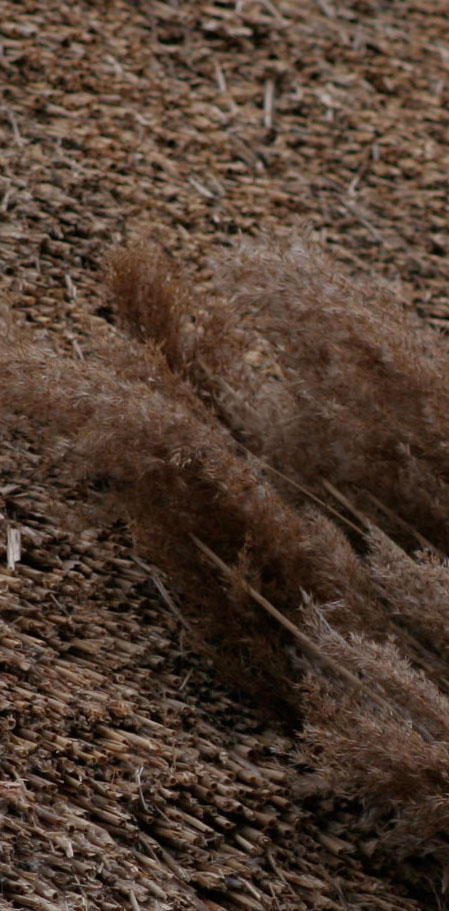
- Standards
Water Reed Specification For New Build Thatch
Roof Thatching is generally recognized as a craft and as such it is almost impossible to give a single specification
for a re-thatch. However in the field of new build thatching, the majority of work is undertaken using water
reed and therefore a specification is possible:
The Water Reed should be laid to a thickness of approximately 12"/14" (300/350mm)
The ridge most commonly used is a block cut, patterned and saddled type ridge
Supply and fix, 314 inch (19mm), 22 gauge galvanised wire mesh
Chimney flashings are usually lead although cement flashings are perfectly acceptable
Finally the thatcher should be expected to leave the site reasonably tidy
Fixings (For All Types Of Roof)
Hazel or steel runners can be applied and secured by steel roof thatching nails, fixing wires, twine or spars.
The method will depend on the roof in question and the material used, however water reed on a new
roof is usually fixed with thatching nails or stainless steel wires attached to rust-proof screws.
Roof Pitch
It is advisable to set the pitch at about 50 degrees. This is not due to the weight of the material, which is
in fact not over heavy, but rather to facilitate efficient drainage. Dormer roofs and eaves window-roofs
should be at least at a 45 degree pitch, if possible.
Insulation of a Thatched Roof
Thatch is inherently a good thermal insulator with 'r' values of 11.1 and 14.3 mK/VV for reed and straw
respectively. It is worth noting that generally thatch is considered a 'warm roof construction' and consequently
does not require the ventilation of a tiled roof.
Thermal Quality
The U value of a roof refers to its thermal conductivity, i.e. how quickly heat is lost from it, and is measured in
watts per metre squared per Kelvin. The U value of 12 inches of Water Reed on a pitch of 45 degrees is 0.35
W/sq m K. An R value is the inverse of U. The current building regulations state that the U value required
from a new roof should be 0.2W/sq m K. Therefore there
has to be some sort of insulation even under a thatched roof.
The calculations for U value are relatively complicated and therefore should be left to the
architects. However it is definitely worth telling any interested parties that Thatchbatts and Thatch
Foil underneath the thatch give a U value of 0.16.